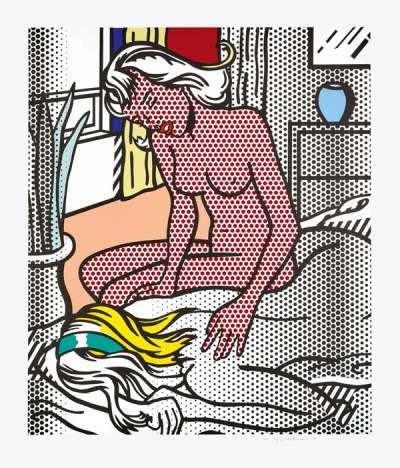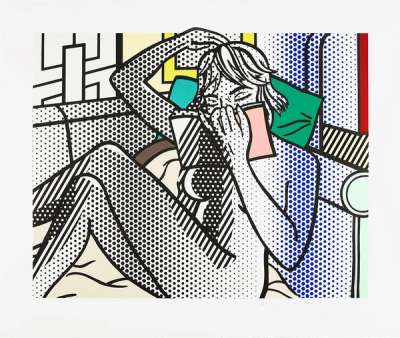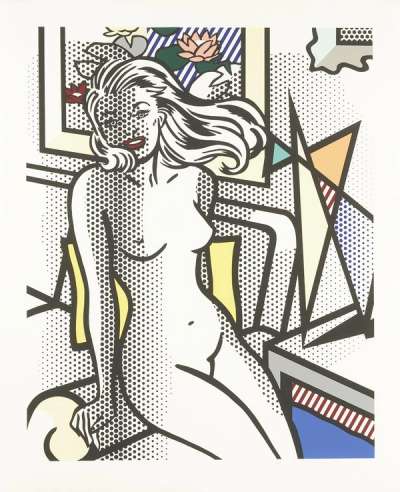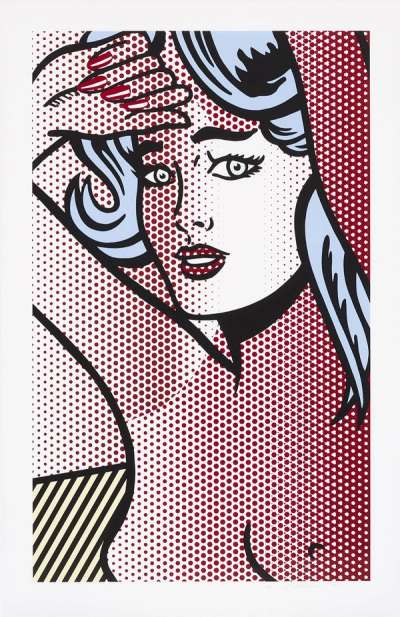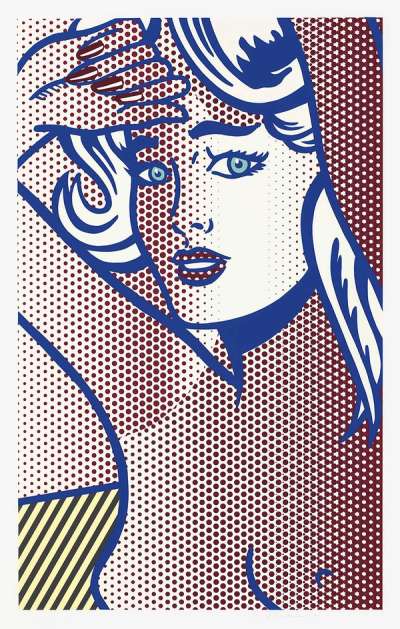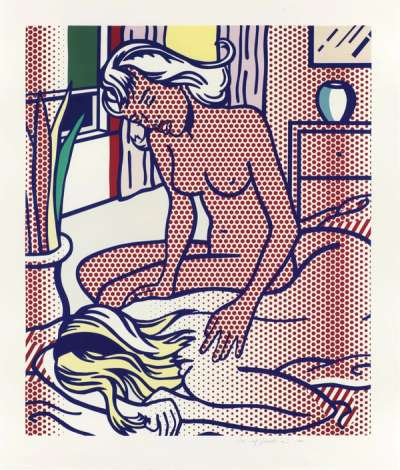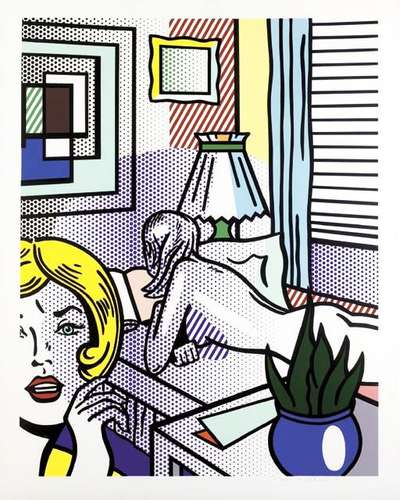
Thinking Nude
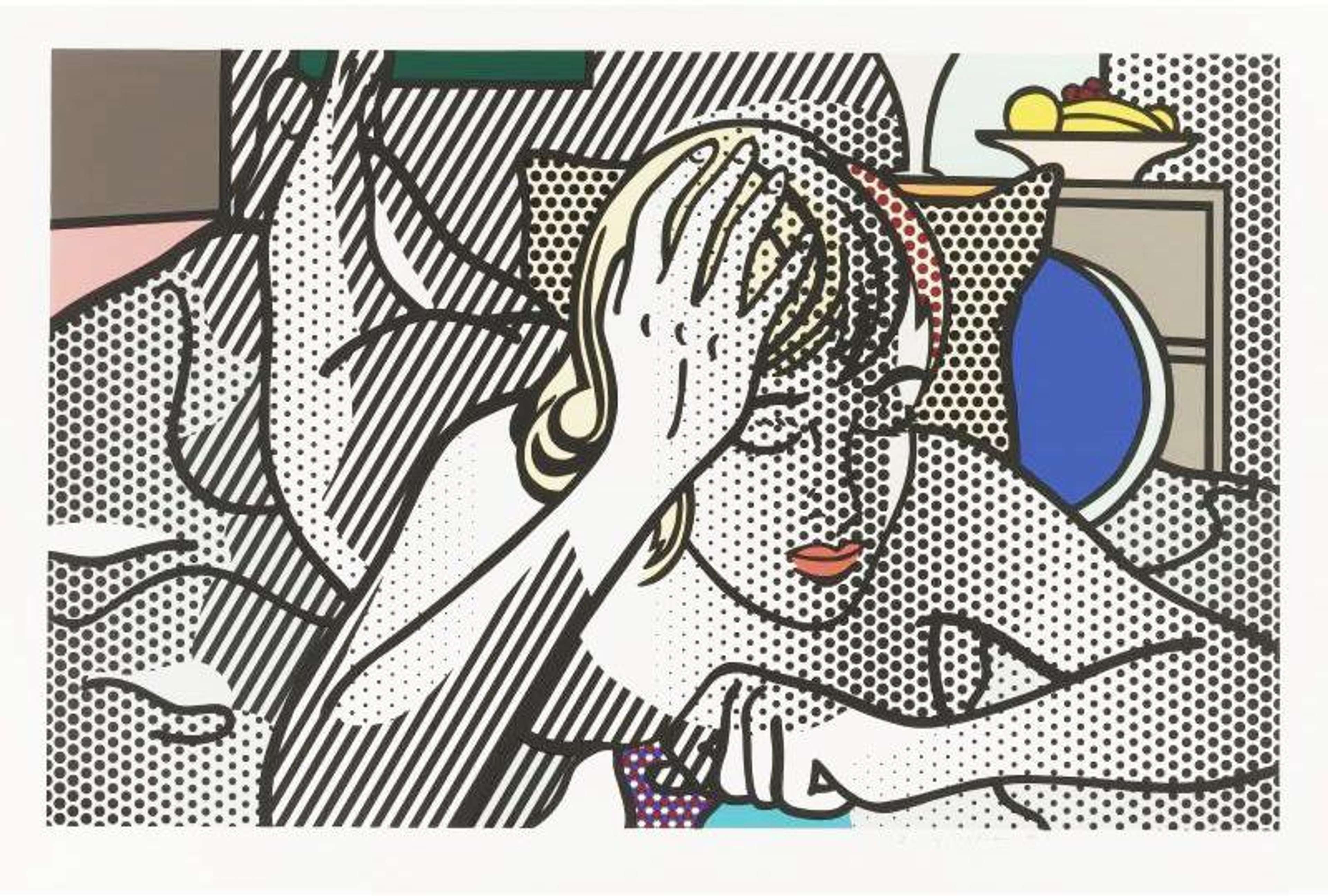
Thinking Nude
Signed Print
Roy Lichtenstein
£240,000-£350,000Value Indicator
$490,000-$720,000 Value Indicator
$440,000-$650,000 Value Indicator
¥2,320,000-¥3,390,000 Value Indicator
€280,000-€400,000 Value Indicator
$2,540,000-$3,710,000 Value Indicator
¥47,660,000-¥69,500,000 Value Indicator
$320,000-$470,000 Value Indicator
There aren't enough data points on this work for a comprehensive result. Please speak to a specialist by making an enquiry.
90 x 142cm, Edition of 40, Screenprint
AAGR (5 years) This estimate blends recent public auction records with our own private sale data and network demand.
TradingFloor
Auction Results

Track auction value trend
Meaning & Analysis
Roy Lichtenstein’s Nudes of 1994 place cartoon imagery once again at the centre of his composition. In this series, the artist takes on the traditional art historical theme of the naked female form. While cartoon heroines have frequently featured in Lichtenstein’s creative practice, the intimate scenes captured in his Nudes depict an entirely new interpretation of femininity.
We find the intimately cropped heroine of Thinking Nude outstretched in bed. The contours of her body are obscured by heavy dots and stripes. Her right hand supports her head, which is accentuated with small colour fields of pastel. A vivid illustration of a fruit bowl sits in the upper right corner of the canvas. Similar to another print from the series titled Nude Reading, the leading lady of this composition is unaware of the world outside her comfortable interior.
Unlike traditional portraits depicting the naked body based on live models, the female figure in Lichtenstein’s Thinking Nude is an invention, expressed through his usual sardonic vernacular. In fact, the print reveals more about the artist's elaborate printing methods and the observer’s voyeuristic tendencies, than the subject matter of the female form. The white wove paper employed in Lichtenstein’s Nudes holds rich printings of ink, offset from the relief plates utilised during the printing process. This form of printing deposits voluptuous layers of pigment to paper, resulting in defined printed elements and crisp edges.
Roy Lichtenstein, born in New York, 1923, is a seminal figure in the Pop Art movement, renowned for his comic book and advertisement-inspired artworks. His transformative journey from classical painter to Pop Art pioneer began with his iconic piece, Look Mickey, marking the fusion of painting with pop culture. Lichtenstein’s works, including Whaam!, Drowning Girl, and Crying Girl, blend parody and satire, challenging the boundaries between popular culture and ‘high art’. With over 5,000 pieces to his name, Lichtenstein’s enduring influence resonates in contemporary art, his works celebrated in prestigious institutions worldwide.
